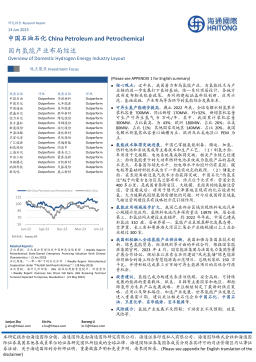美国记者西摩·赫什:美国是怎样炸毁北溪天然气管道的?【英文版】  VIP专免
VIP专免
HowAmericaTookOutTheNordStreamPipelineTheNewYorkTimescalledita“mystery,”buttheUnitedStatesexecutedacovertseaoperationthatwaskeptsecret—untilnowSeymourHershFeb8TheU.S.Navy’sDivingandSalvageCentercanbefoundinalocationasobscureasitsname—downwhatwasonceacountrylaneinruralPanamaCity,anow-boomingresortcit...
评论(0)
相关推荐
-
2030光分储能源转型白皮书(全球视角)VIP专免

 2023-07-19 154
2023-07-19 154 -
千际投行:2023年第三方支付行业研究报告VIP专免

 2023-06-20 120
2023-06-20 120 -
锐仕方达:2023年医药行业薪酬白皮书VIP专免

 2023-06-20 134
2023-06-20 134 -
行行查:2023年中国IGBT行业研究报告VIP专免

 2023-06-20 49
2023-06-20 49 -
F5:2023年应用策略现状报告VIP专免

 2023-06-20 60
2023-06-20 60 -
58安居客研究院:2023年青年置业报告VIP专免

 2023-06-20 76
2023-06-20 76 -
蝉妈妈:2023抖音电商家具建材行业报告VIP专免

 2023-06-20 61
2023-06-20 61 -
嘉世咨询:2022卫浴五金行业简析报告VIP专免

 2023-06-20 43
2023-06-20 43 -
行行查:2023年中国种子行业研究报告VIP专免

 2023-06-20 39
2023-06-20 39 -
易点天下:2023中国新能源品牌出海行业观察VIP专免

 2023-06-20 36
2023-06-20 36
作者详情
相关文档
-

中国石油石化:国内氢能产业布局综述
分类:传统行业
时间:2023-06-30
标签:无
格式:pdf
价格:8 数查币
-

石油加工行业深度报告:产能周期下油服行业机遇渐显
分类:传统行业
时间:2023-06-30
标签:无
格式:pdf
价格:8 数查币
-

英国石油公司:2023世界能源统计年鉴【英文版】
分类:传统行业
时间:2023-06-27
标签:无
格式:pdf
价格:10 数查币
-

国际能源署:石油2023——分析和预测至2028【英文版】
分类:传统行业
时间:2023-06-20
标签:无
格式:pdf
价格:12 数查币
-

石油石化行业专题研究:PV10看三桶油估值
分类:传统行业
时间:2023-06-20
标签:无
格式:pdf
价格:12 数查币









请登录,再发表你的看法
登录/注册